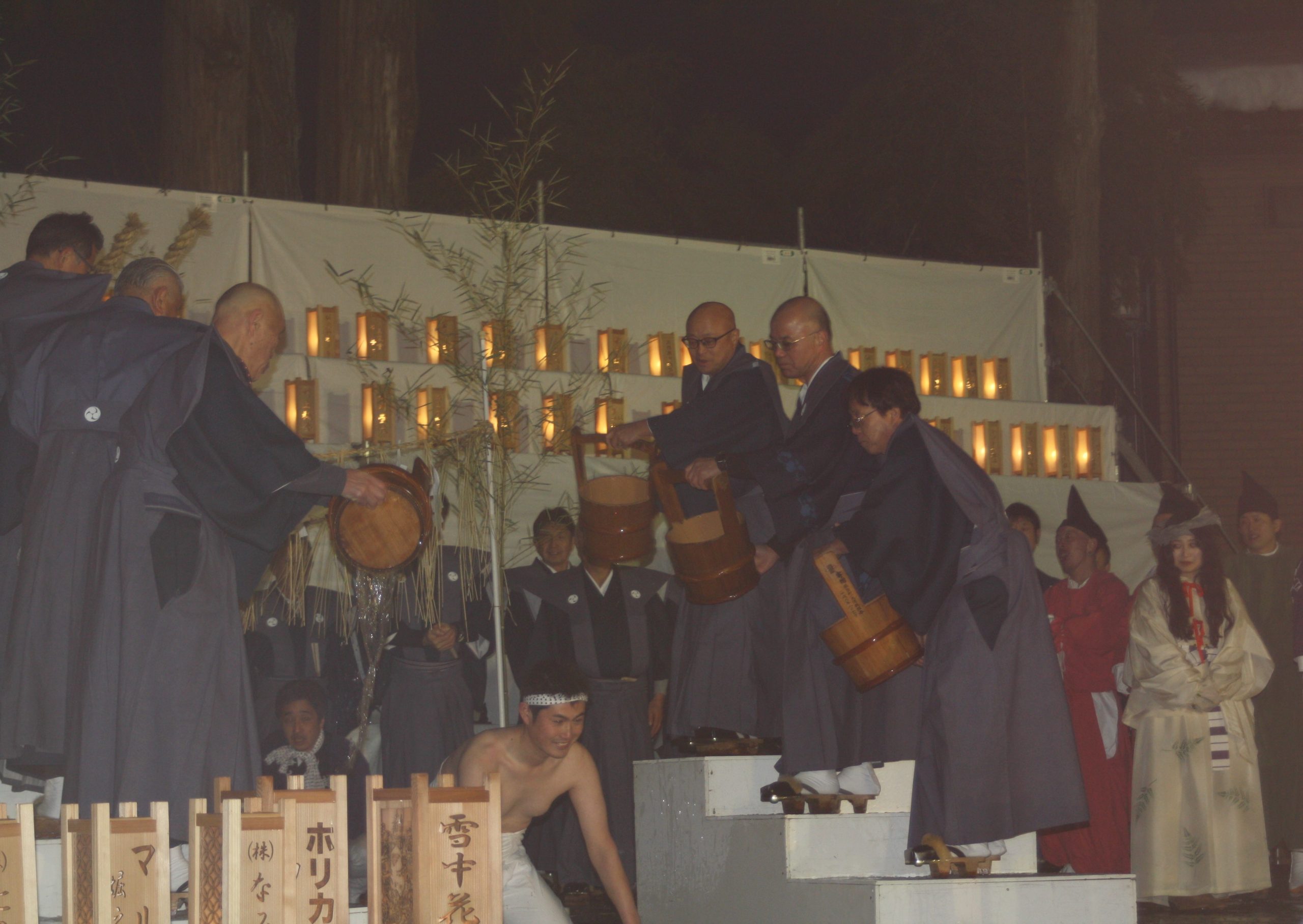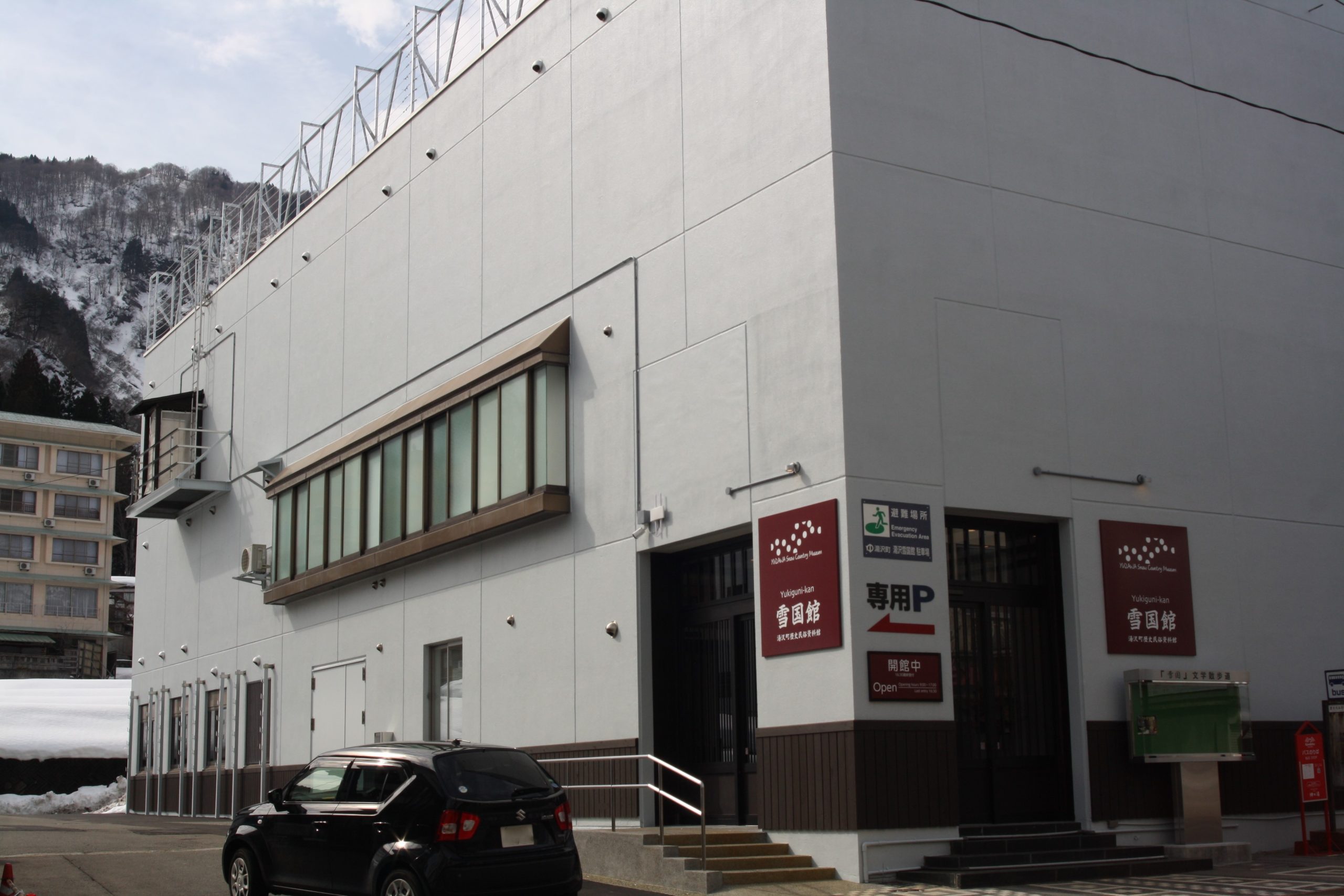Back in the day YUKIGUNI was buried even deeper in the white stuff than today. The houses, rice fields, vegetable patches, and mountains where completely covered in the white of the deep snow, so what food did the people living there have, and what were they eating?
This can be answered by “preserved food” which is still very much in evidence in modern day. For these early residents of the region obtaining this knowledge and techniques was a lengthy process of years and years with plenty of failure and frustration along the way.
Even in these times of plenty, the things they managed to develop are able to impress us and lead us to more discoveries. Let’s take a look at this knowledge contained in food which has been passed down intact through so many generations.
The roots of this wisdom are thought to lie in the Jomon culture. The Jomon are a mysterious people who disappeared some 3,000 years ago. They are said to have lived in harmony with the forests of the Japanese archipelago for over 10,000 years. If you are interested in the mysteries of the Jomon people, please read the following articles.
Do You Know About The Jomon Culture Hidden Deep In The Heart Of Japanese Culture?
Story 01
The wisdom born from the deep snow “Daikon-tsugura”
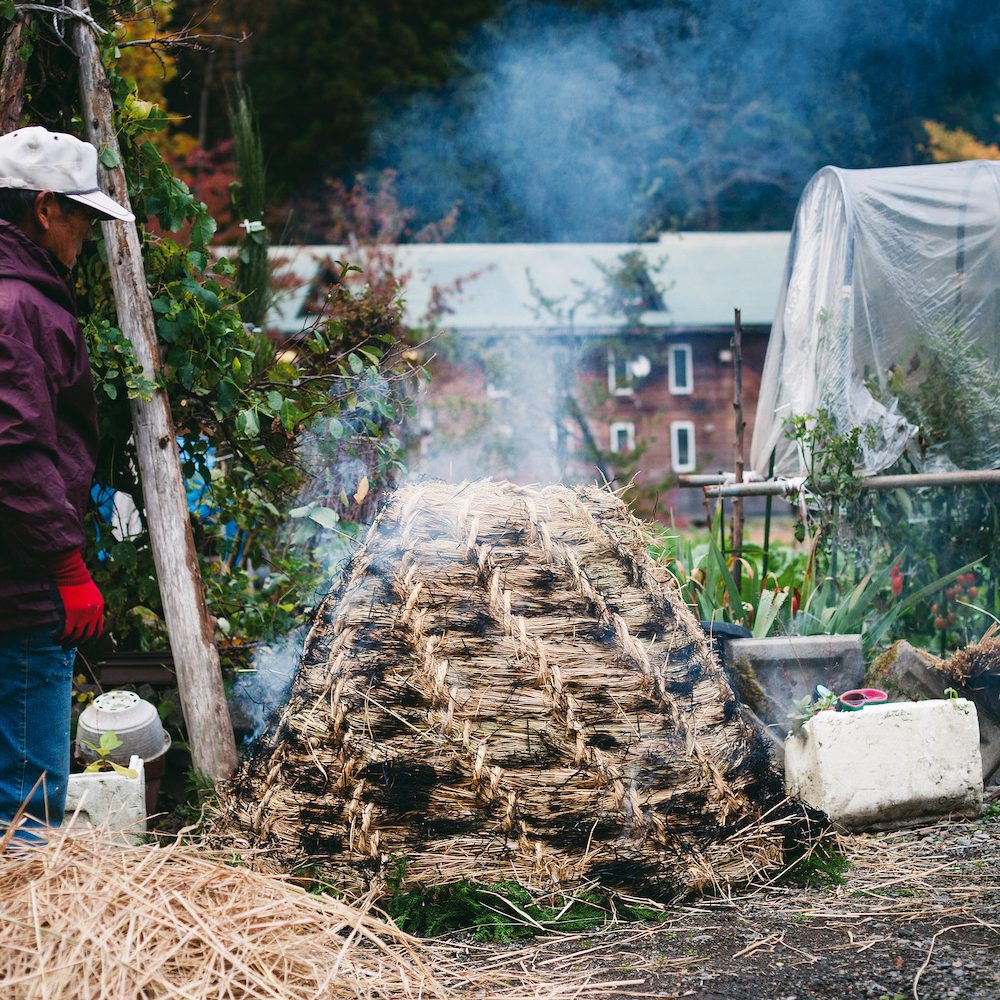
On the border of Niigata and Nagano Prefectures is Ketto, part of Tsunan town. Snow clearing systems were not put in until 1978 which is when it became possible to get in and out by car over winter. They definitely had to have the knowledge and techniques to stay supplied with food over the winter months in this mountainous area, much more so than in the valley.
The locals of this area spent spring to autumn collecting food from the mountains and fields, and preserving what they didn’t immediately eat to store for the winter. Their ancestors in this region came up with systems for preserving food that were ingenious and impressive.
One of those is the Daikon-tsugura – a cold storage system for the white radish. Mr. Masanori Takizawa, a born and bred resident of Ketto, continues to make these Daikon-tsuguras today. Nobody taught him how make them. He just has the memory of his parents making them and works from that.
Every year, when the rice harvest has finished around the end of October/beginning of November, he weaves a cylindrical container out of straw which is known as a “tsugura”. Just before the snow falls he fills it with things like radishes and carrots. Then throughout the winter, the inside of this tsugura is the perfect environment for keeping things fresh, and the vegetables stored within will be eaten all the way until May the following spring.
It is always placed close to the house so it is easy to access with no need to go digging through deep snow. When spring arrives it becomes possible to collect mountain plants again, and the tsugura is left in the fields to become fertilizer. The daikon tsugura is a special kind of Snow Country cold storage for the winter months.
When he was younger he often headed to the city to try to make a living. “The outside world is tough. My home deep in the mountains is the best place to be!” he laughingly admits. From his cheerful expression you sense that he loves living in the land of deep snows.
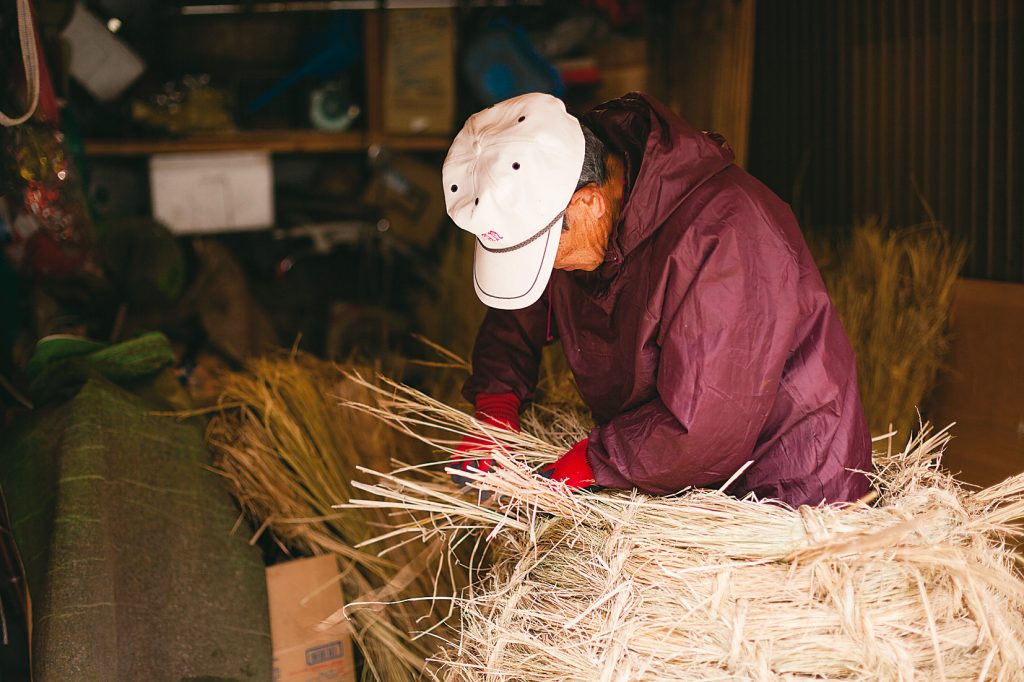
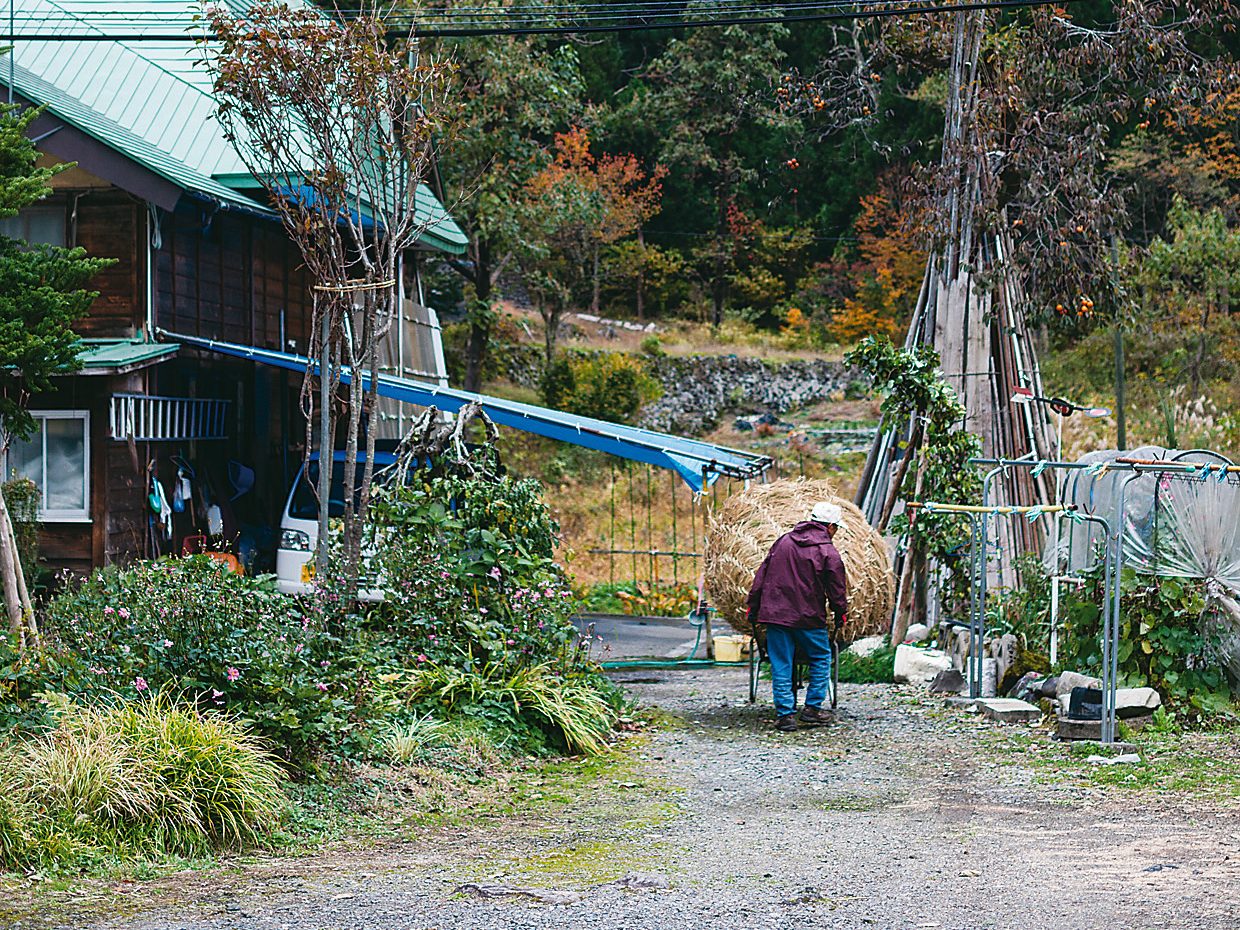
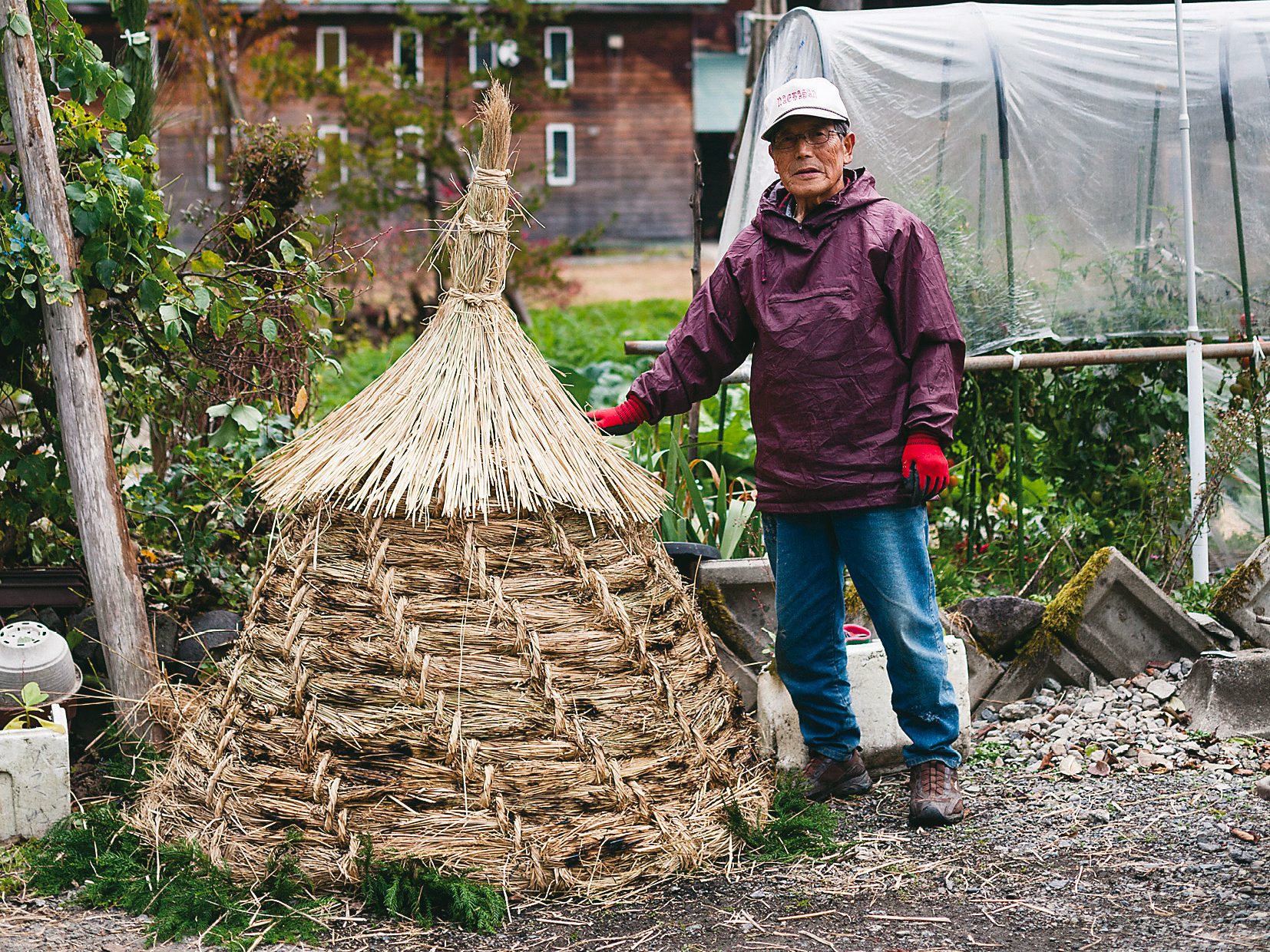
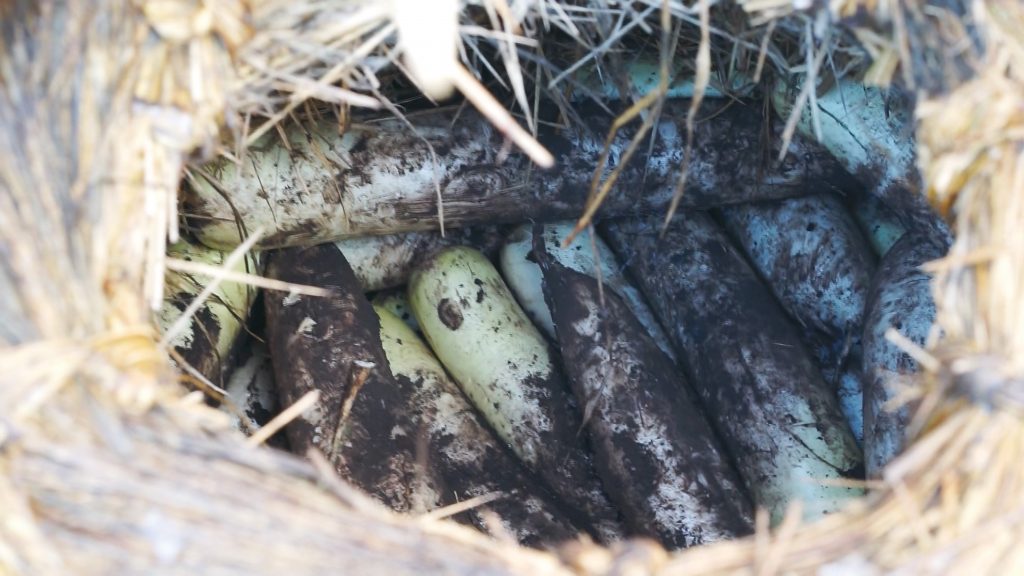
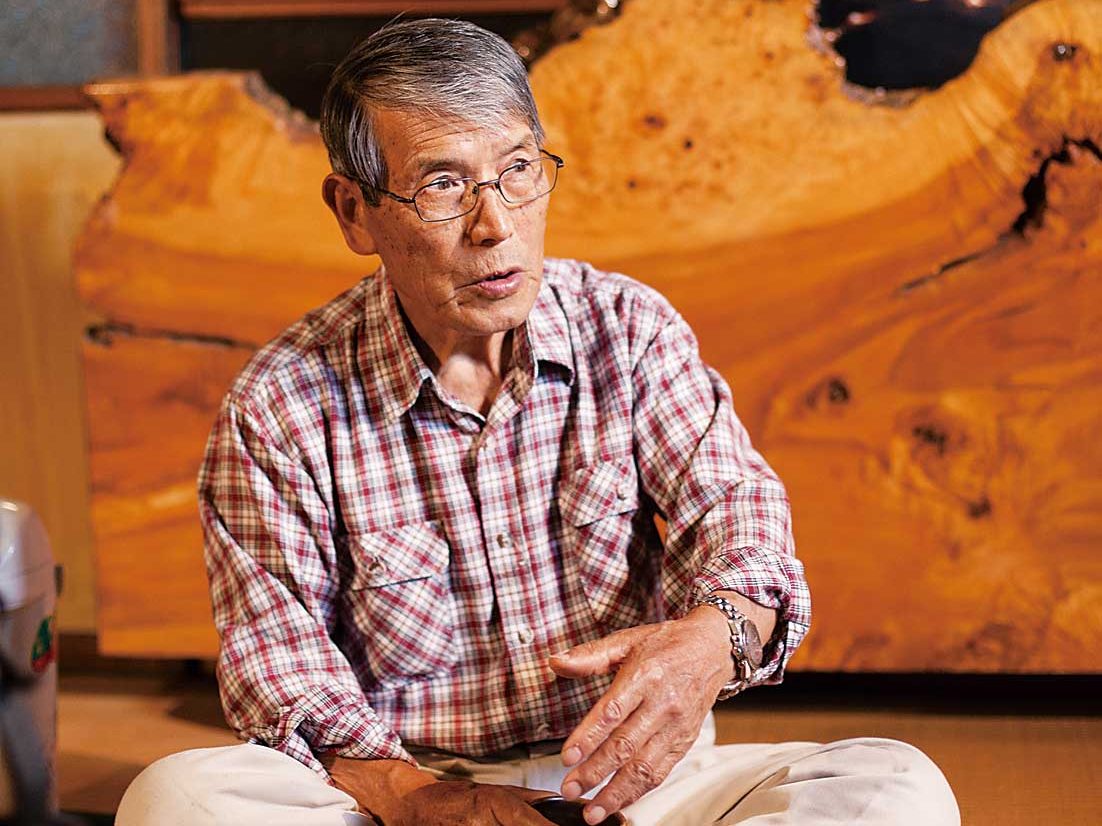
Masanori Takizawa
In 1980 he started a soba restaurant called Kudari in his own home.It is an old farmhouse with an open hearth which serves local style soba noodles that use mountain burdock as the binding agent, along with home-grown vegetables, and wild plants.
Story 02
A chat with an expert on preservation. Storing food in the snow country.
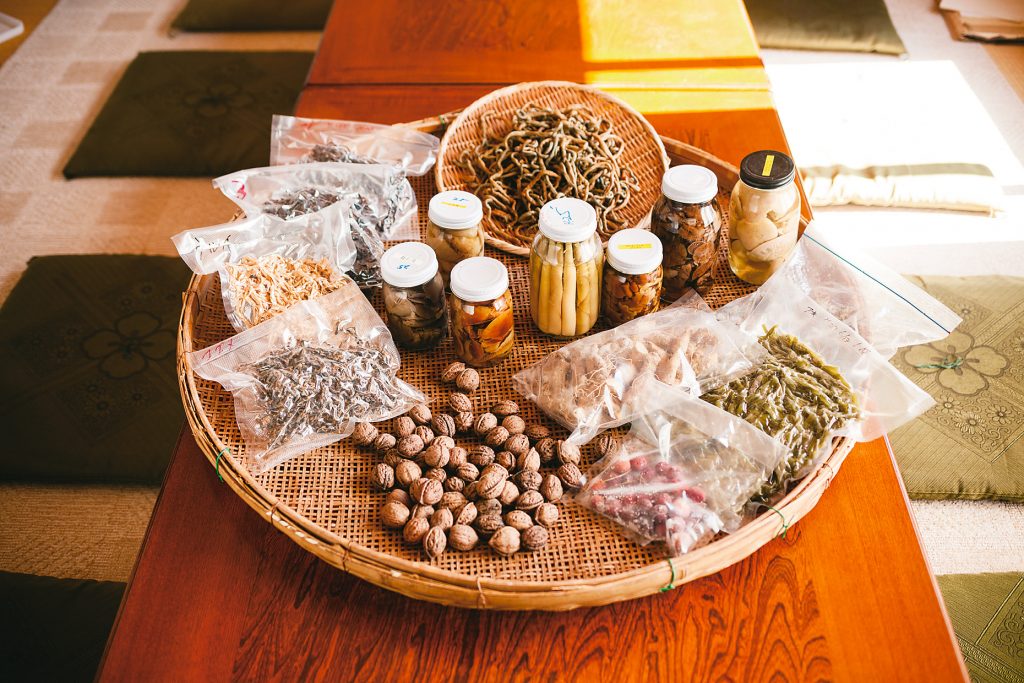
“Here in Matsudai it is one of the snowiest places in Japan. Just 40 years ago winter was like being on a secluded island because you were cut off from everything from when the first snow fell until it melted again. You needed to have enough food laid up to get you through that half of the year,” says Tatsuzou Murayama, boss of Tobu Taxi. As well as the taxi business, he also works as a guide taking people around the points of interest in the local countryside as part of a tourist taxi route.
He’s head of the Hokuhoku-mura non-profit organisation which every year hosts a natural food event where ingredients gathered from the mountains around Matsudai are prepared and eaten by the locals.
“Here in the snow country winter is always on people’s minds throughout the whole year, and affects their actions. The wild vegetables that are picked in spring are preserved then, and likewise the autumn mushrooms are preserved too. When things are in season you try to pick more than you can eat so that you have extra to lay aside. There is no waste, and you can lay up stores for the long winter.”
It is said that Murayama-san knows what is growing where in the mountains at any time. Next to his house is a store room where he is preserving mountain plants and fruits using old methods. “In the past the only things that you ate were things that you could find in nature or grow yourself. Meat was only for special occasions like Obon [in August] and New Year, and even then was from birds or rabbits that you raised yourself. It was mostly a plant based diet.”
Even today it is possible to pickle things in salt and keep them for a long time without them spoiling. This is something that our ancestors put a lot of thought into. Also because no preservatives were added it was good for the body. When you come to YUKIGUNI and eat the local food, be sure to taste the knowledge that accompanies the ingredients in this region.
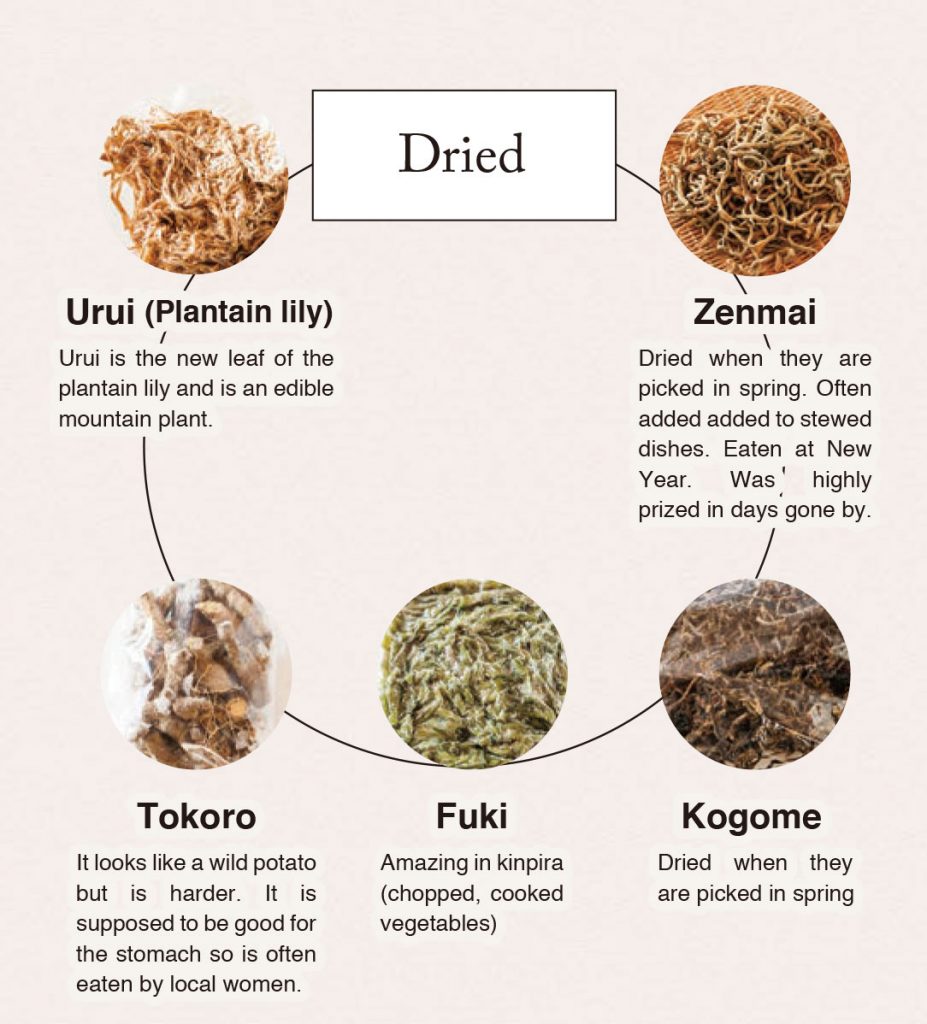
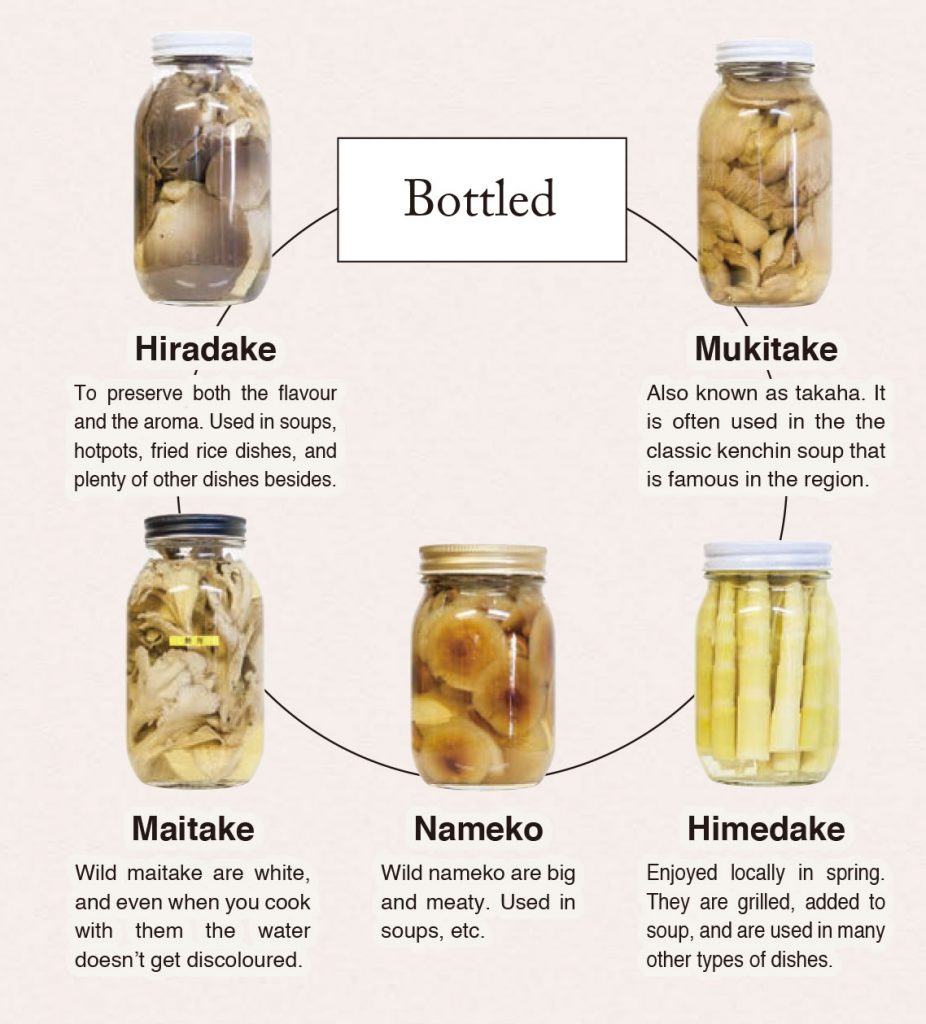
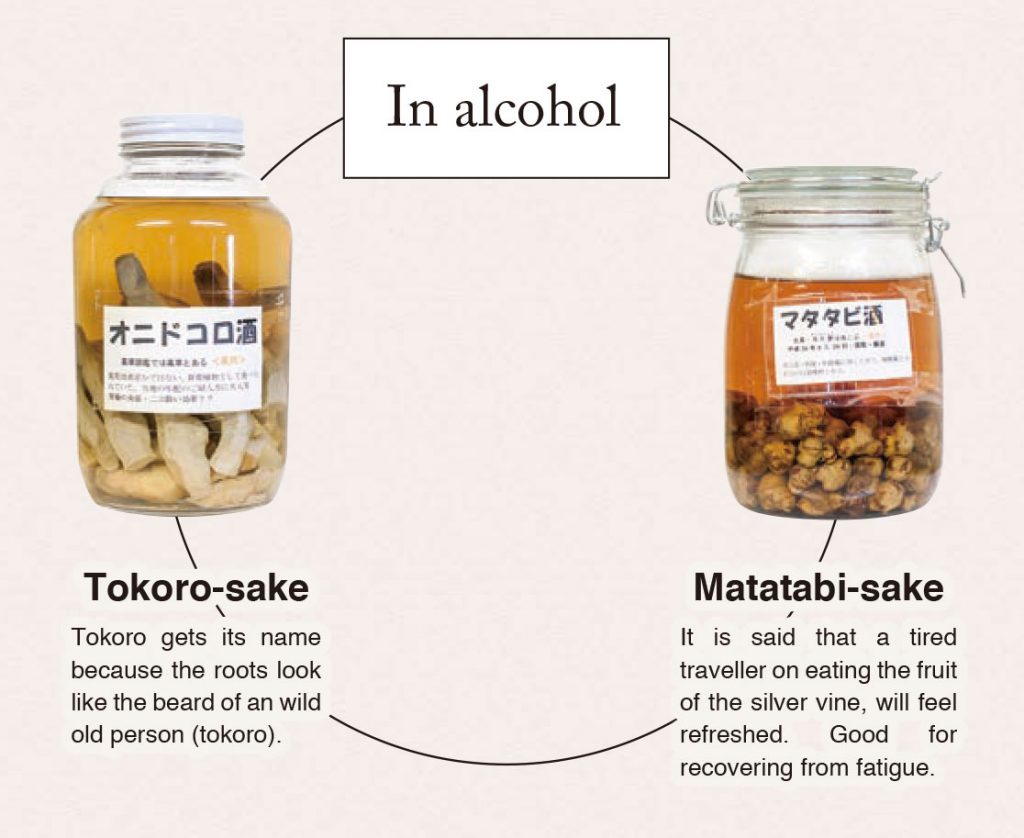
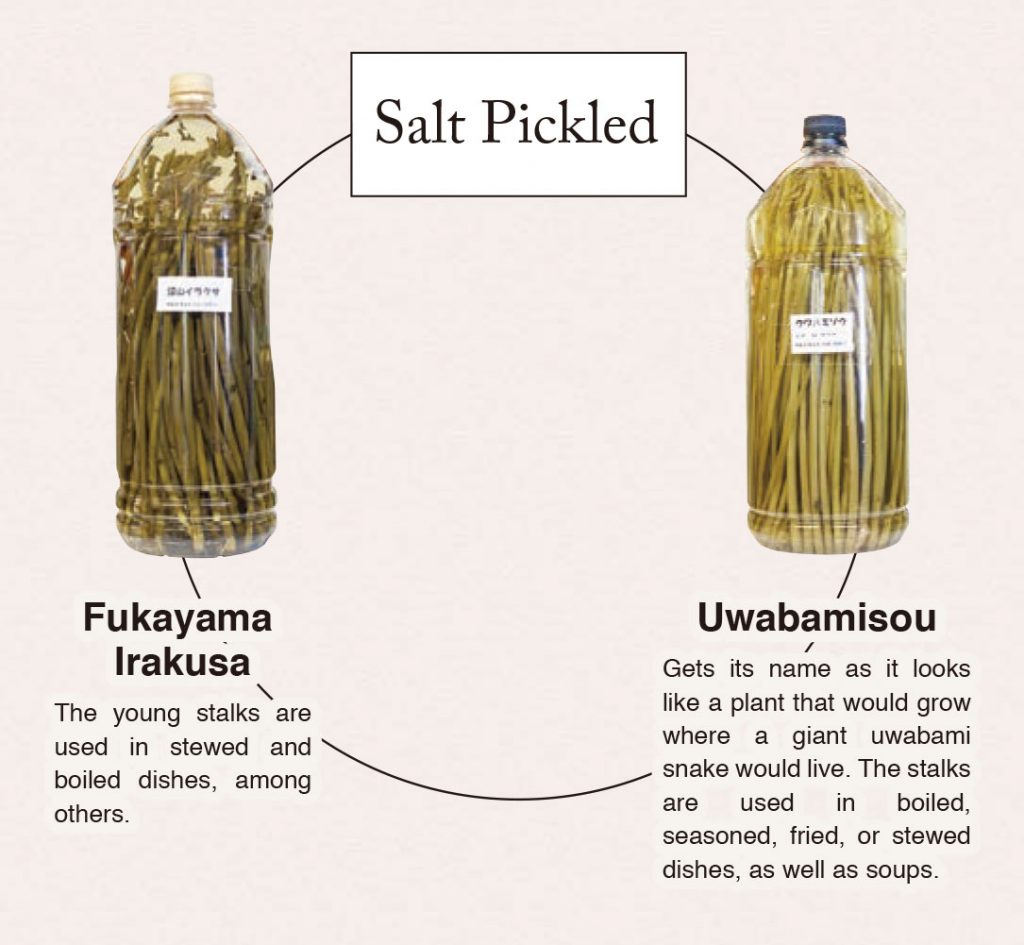
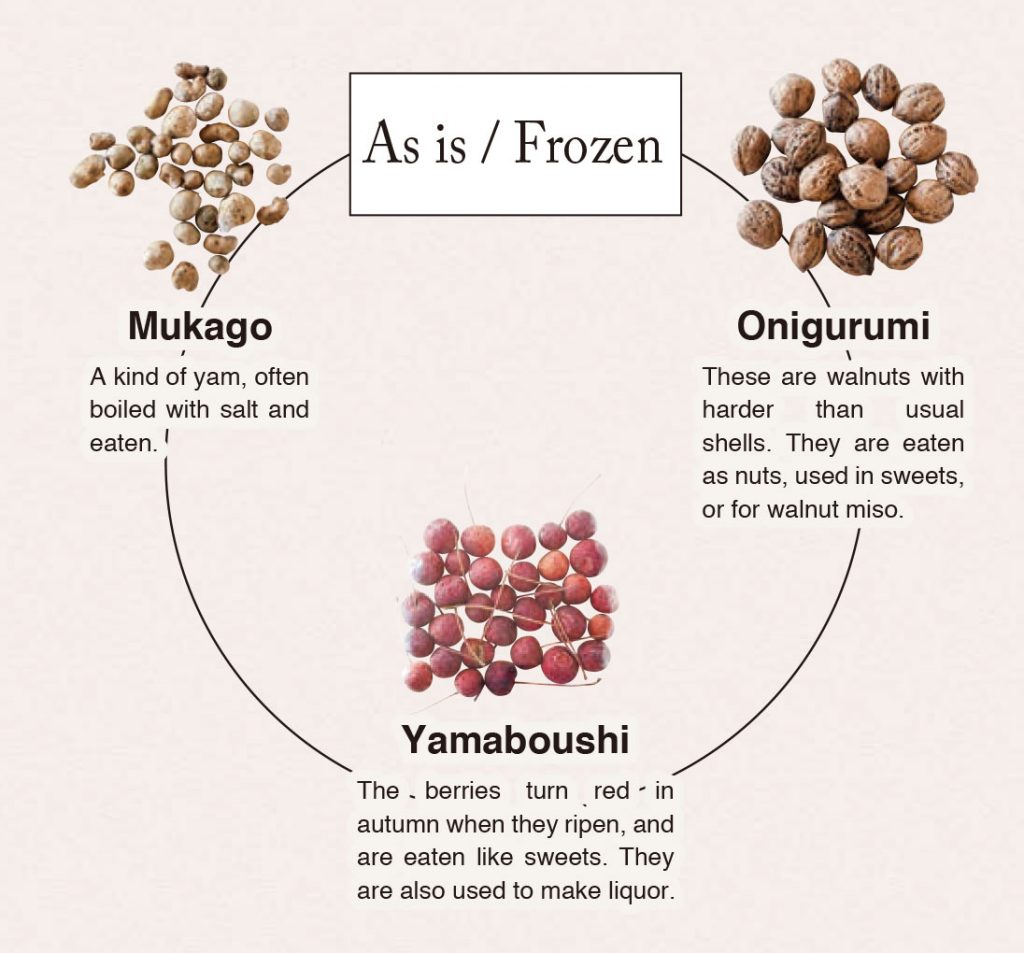
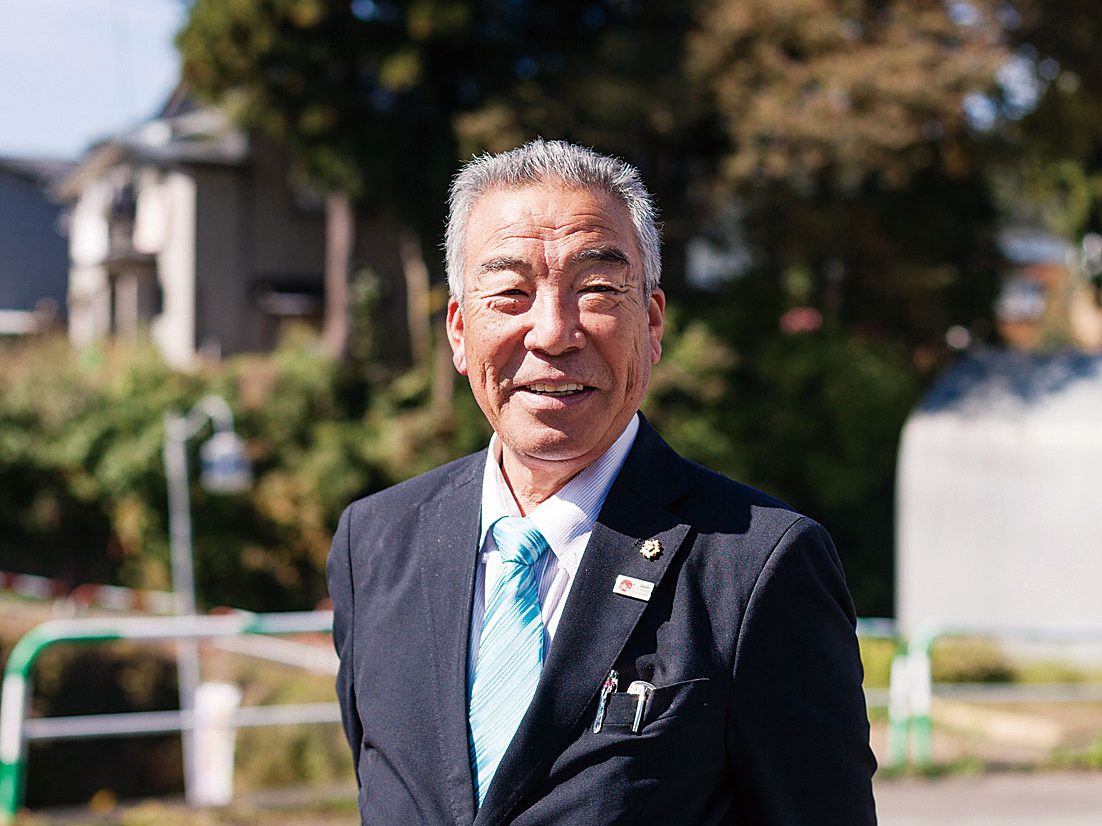
Tatsuzou Murayama
He lives in Matsudai, part of Tokamachi city, and is a director of Tobu Taxi. As well as the taxi business, he also works as a guide taking people around the points of interest in the local countryside as part of a tourist taxi route. He is part of the Matsudai Town Tourism Board, as well as representative for Niigata Tourism. He also helps organise the Ai-no-Kaze street market
Story 03
Using Preserved Foods in Cooking
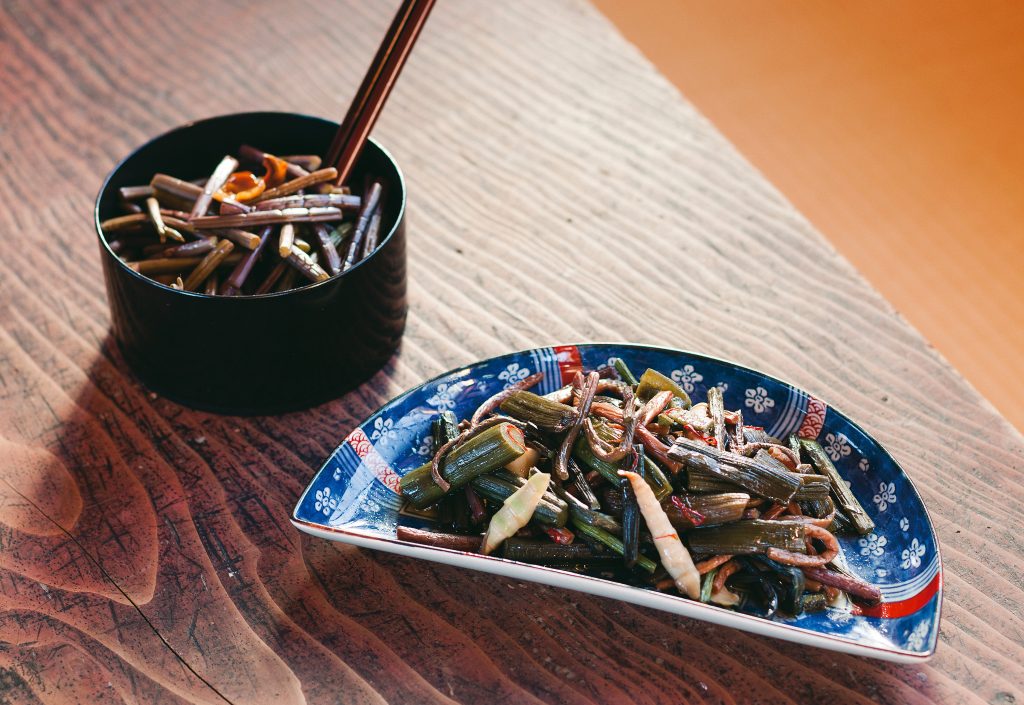
If you are talking about preserved foods in the snow country, it is mountain vegetables that come to mind first. Wild plants like zenmai, warabi, udo, and azami are picked, and then dried outside during the fine days of spring, or quickly pickled in salt after they have been picked. Once they have been preserved, how are these foods used in cooking?
While still fresh, warabi and udo are prepared and then pickled in salt which means that they can be stored for a long time. Also, the warabi that have been pickled in spring can be dried in the strong summer sun. Both methods enable the ingredients to be stored for long periods.
Zenmai is usually left outside in the sun to dry. To avoid it becoming hard involves some additional effort as it has to be turned over several times and rubbed. It takes experience to get this process just right. It is done about 3 times at intervals and ideally in such a way that the zenmai are dried equally all over and do not become tough. When they are freshly picked they might weigh 10 kgs but once dried they become a great deal lighter as the majority of that weight is made up of water.
The people of YUKIGUNI live side by side with nature and enjoy its blessings. It is not something that is learned from text books or the internet, but instead is knowledge that is passed down from generation to generation and from parent to child. So what kind of delicious dishes can be made from these gifts from nature you may wonder. We asked Matsuyo Nakamaru-san.
“Of course, mountain vegetables that are fried have a great taste. Soups and boiled dishes are also exceptional.” You should definitely try this amazing bounty from the mountains – there is no greater delicacy than this.
If you want to know more about Japanese food culture, read the story about the Zenmai (royal fern): the people of YUKIGUNI love wild vegetables, but the royal fern is the most precious, laborious and special of them all. A story about a little-known Japanese food culture.
Stir-fried mountain vegetables
- [Ingredients] Zenmai, Warabi, Azami, Udo, Bamboo shoot, etc
- [Seasonings] Soy sauce, noodle dipping sauce, hondashi stock, salt
Using dried ingredients (Zenmai version)
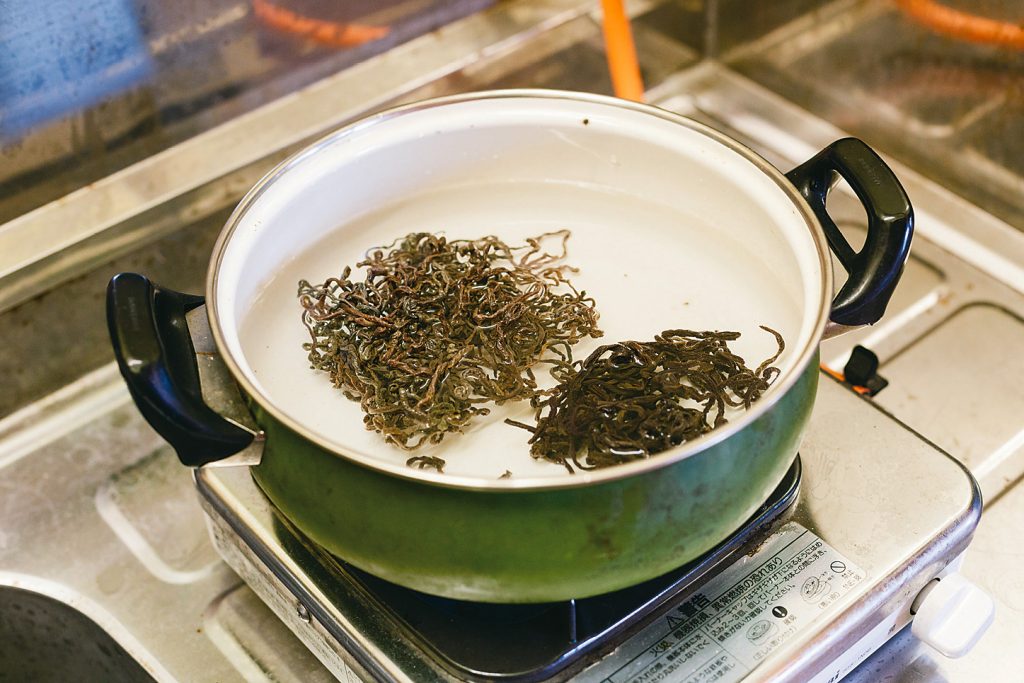
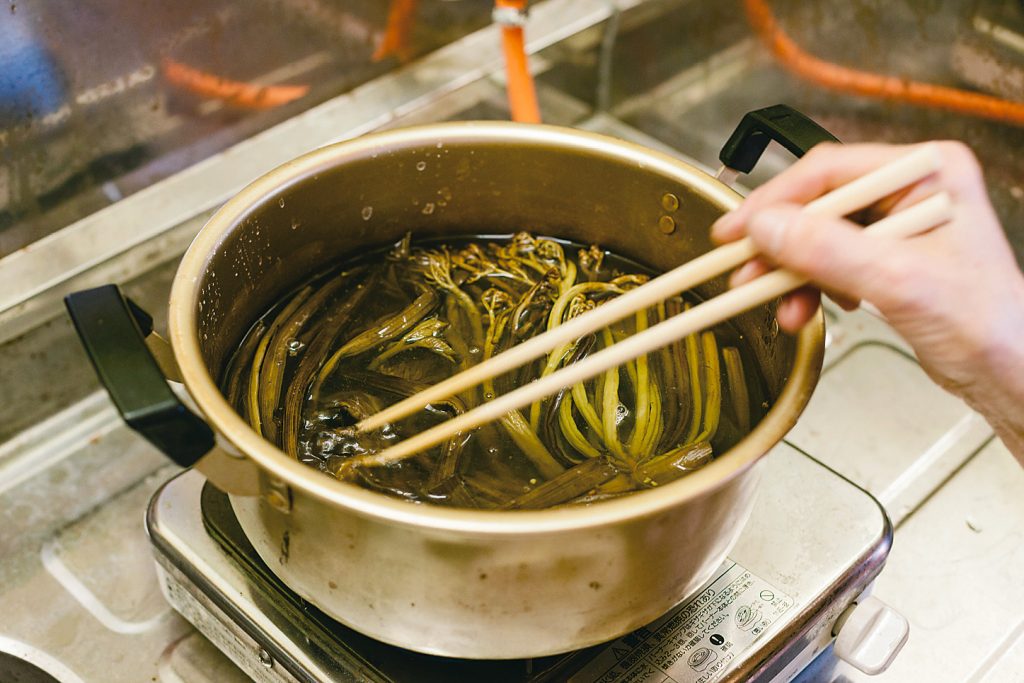
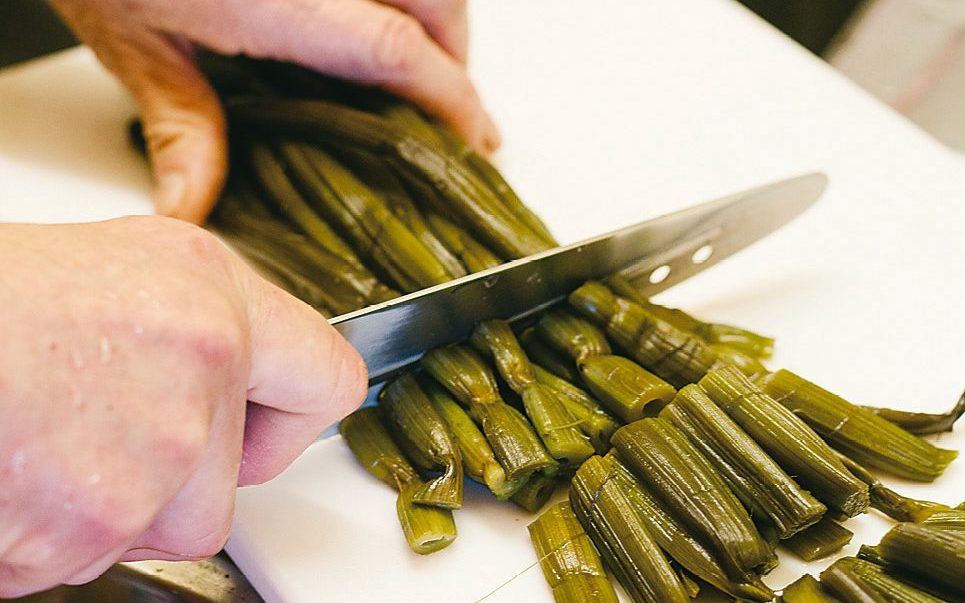
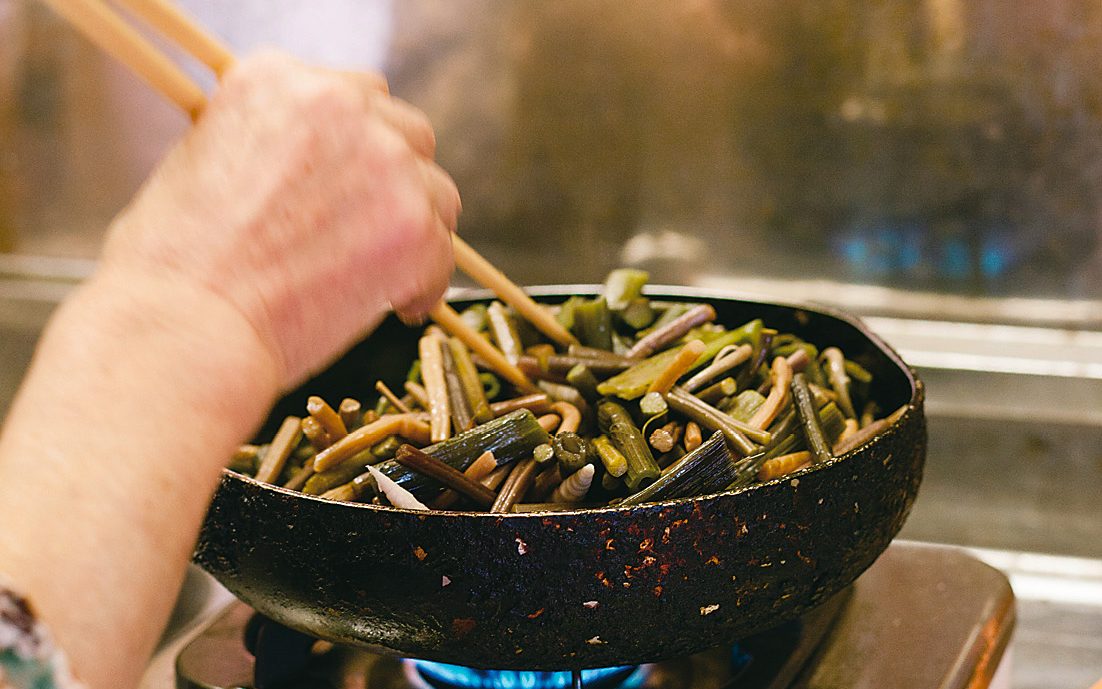
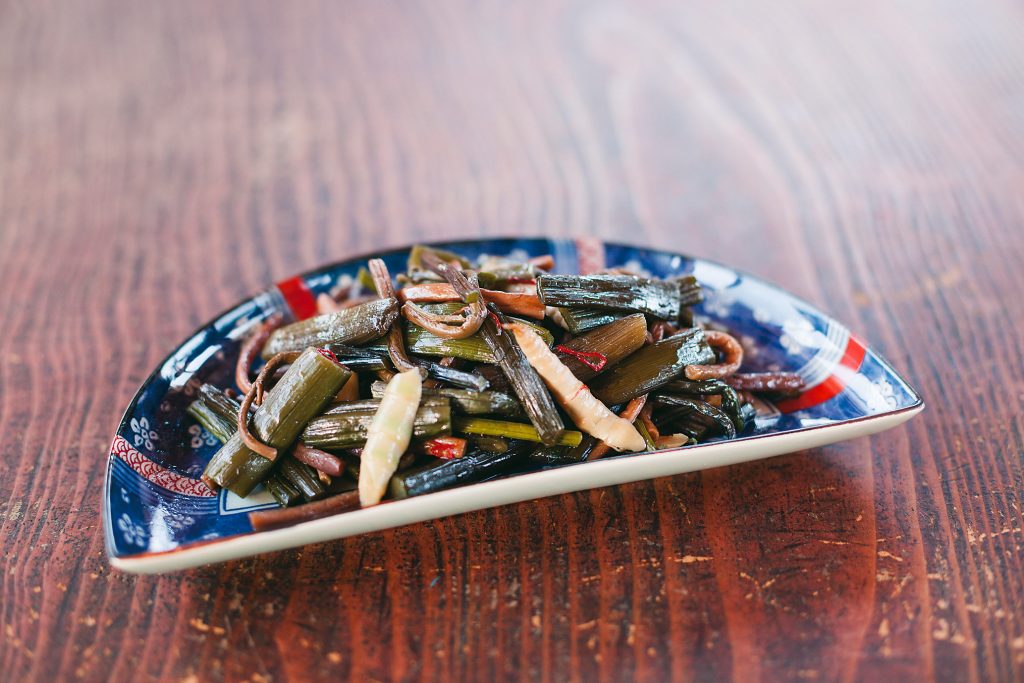

Boiled Warabi
- [Ingredients] Zenmai, Warabi, Nameko mushrooms, Ginger
- [Seasonings] Soy sauce, noodle dipping sauce, vinegar
- Remove the harshness from the warabi (as in the recipes above)
- Cut the ingredients (warabi)
- Mix the seasonings. (Soy sauce, noodle dipping sauce, vinegar)
- Dress the warabi
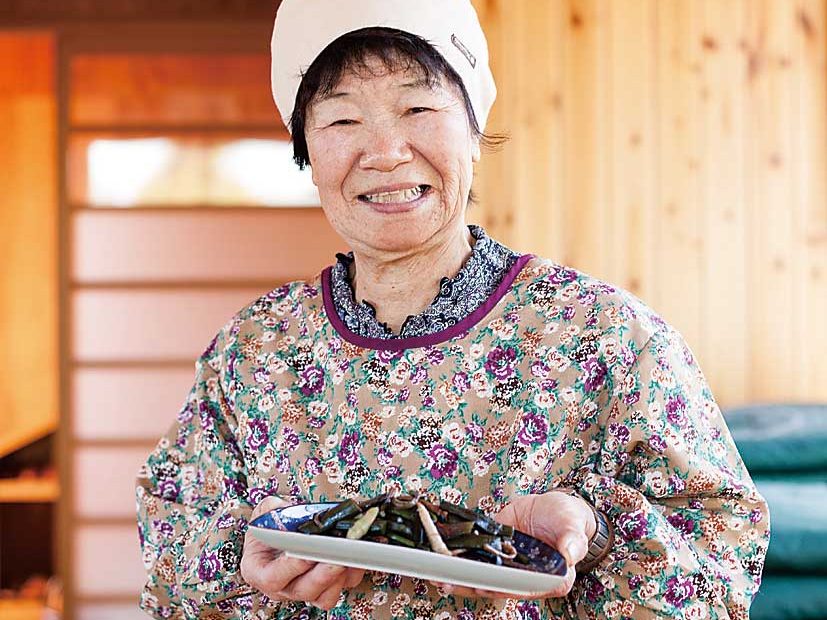
Matsuo Nakamura
She is a volunteer at Uonuma’s Monozuki-mura Farmers Market. In the mornings she is preparing dishes for customers at Monozuki-mura, and in the afternoons she is working in the fields or out collecting mountain plants. The driving force for all her hard work is to see the smiling faces of her customers.
Things To Do
Gastronomy tours in Japan’s YUKIGUNI
Take a gastronomy tour to experience the blessings of the area with all five senses.
YUKIGUNI prepares for winter from spring to autumn because of its snowy and long winters. As a result of this, a rich knowledge of preservation, including fermented food, has been accumulated. YUKIGUNI Gastronomy Tours are an opportunity to immerse yourself in the unique food culture that emerges from this. YUKIGUNI is also famous for its sake, thanks to the abundance of pure water from the melting snow.

